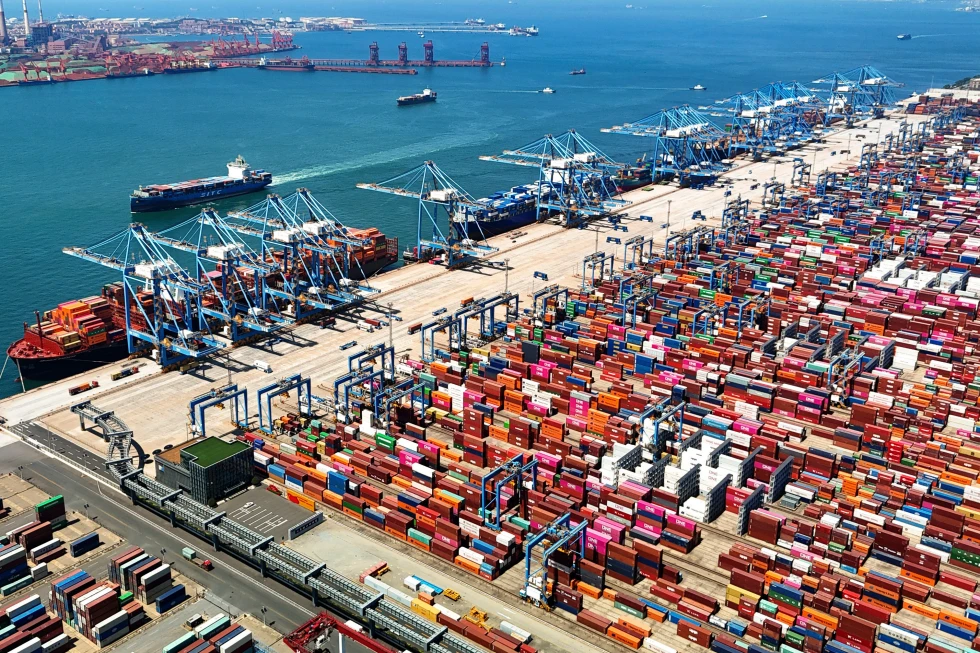Four days before the U.S. port fee plan officially took effect, the Office of the United States Trade Representative (USTR) announced modifications to certain aspects of the responsive action to restore American shipbuilding that it took on April 17, 2025 and solicited public comments on several proposed further modifications to that action.

The U.S. port fee plan will impose new charges on Chinese-owned, operated, or built vessels, as well as all foreign-built car carriers, effective October 14, 2025. These adjustments primarily target the car carrier market and port equipment, prompting a new public comment period, which closes on November 12.
Key Modifications Effective October 14, 2025:
Carrier Fees: The fee for foreign-built vehicle carriers will be set at $46 per net ton, a substantial increase from the previously announced $14 per net ton. The change responds to feedback that the original rate was too low to achieve policy objectives.
LNG Exports: A provision allowing for the suspension of LNG export licenses for non-compliant vessels has been removed retroactively to April 17, 2025.
Port Equipment Tariffs: A 100% tariff will be imposed on certain ship-to-shore cranes and other cargo handling equipment.
Proposed Further Amendments Under Consultation:
USTR is also seeking comments on additional potential measures, including:
Creating a fee exemption for specific ethane and LPG carriers on long-term charters.
Imposing additional tariffs of up to 150% on certain cargo handling equipment, such as rubber-tired gantry cranes and their components.
During the evaluation period, the payment of certain service fees may be deferred through December 10, 2025.
Industry Debates and Controversies:
A central debate has been the metric for calculating car carrier fees. The USTR has settled on “net tonnage,” a fixed value, over the “car equivalent unit (CEU),” which was considered vulnerable to manipulation.
The policy has drawn criticism for applying fees to all foreign-built car carriers, not just those with links to China. Critics argue this exceeds the scope of the original Section 301 action and could form a basis for legal challenges.
Other Notable Adjustments:
Exemptions: Vessels in the Maritime Security Program are exempted to incentivize the use of U.S.-flagged vessels, though this exemption is currently set to expire on April 18, 2029.
LNG Carrier Monitoring: The removal of the LNG export permit suspension clause reflects an acknowledgment of the current shortage of LNG carriers. The USTR has committed to continuing monitoring in this sector.
Port Infrastructure Concerns: The American Association of Port Authorities has warned that high tariffs on Chinese-made cranes—which account for 90% of the U.S. market—could surge infrastructure costs and hinder port expansion.
Additional amendments include new definitions for container and bulk vessels, exemptions for specific gas carriers, and the removal of exemptions for Chinese-built Great Lakes vessels.
China expresses strong opposition to this and has taken resolute and reciprocal countermeasures.
In response, China’s Ministry of Transport issued an announcement regarding the imposition of special port fees on U.S. vessels on October 10. The announcement stated that effective October 14, special port fees would be levied on U.S. vessels.
China will impose sanctions on vessels owned by U.S. enterprises, other organizations, and individuals; vessels operated by U.S. enterprises, other organizations, and individuals; Ships owned or operated by enterprises, other organizations, or individuals in the United States that directly or indirectly hold 25% or more equity (voting rights, board seats); vessels flying the flag of the United States; and vessels constructed in the United States. The maritime administration authority at the port where the vessel is calling shall be responsible for collecting the special port dues.


